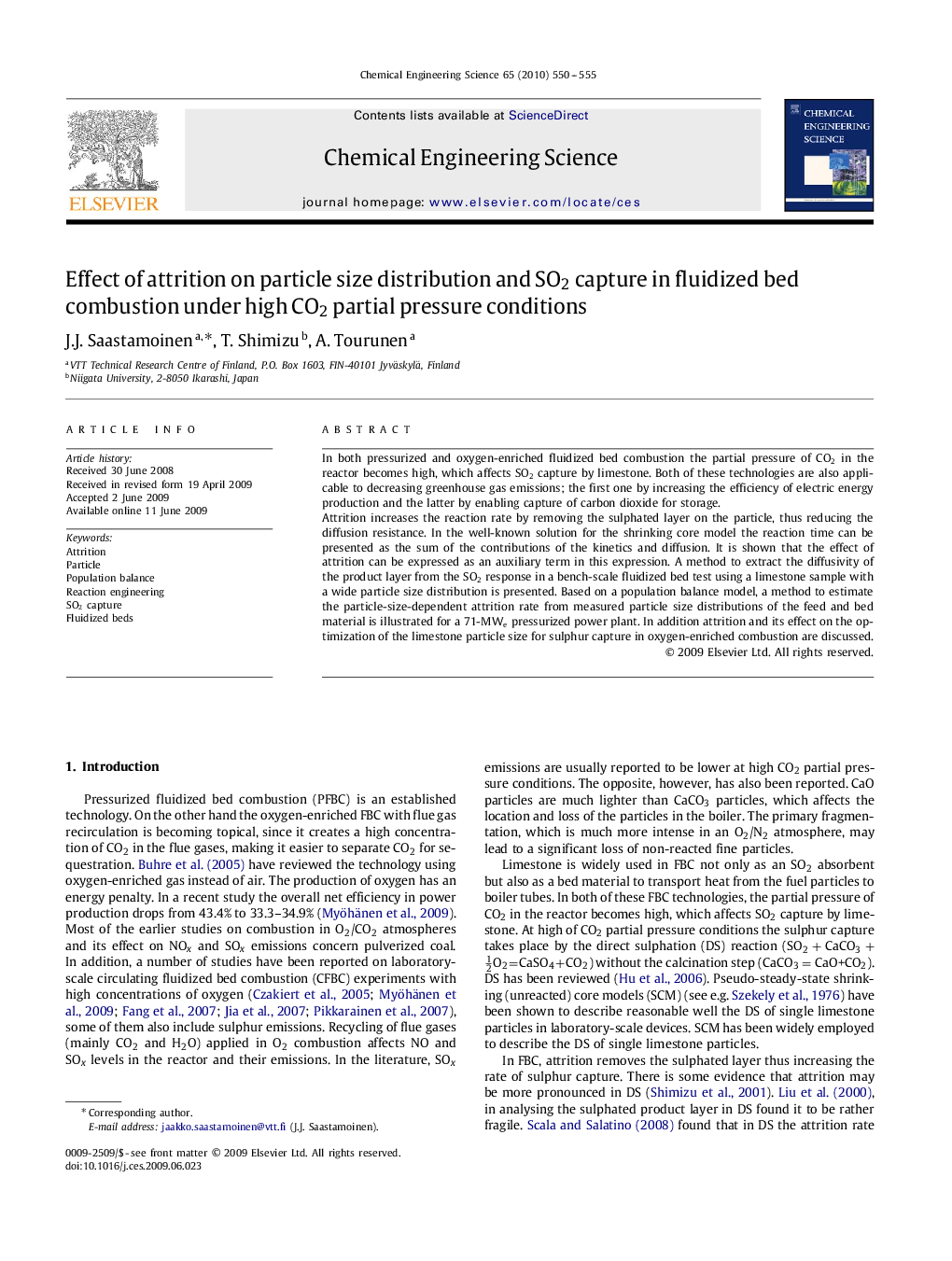| Article ID | Journal | Published Year | Pages | File Type |
|---|---|---|---|---|
| 157740 | Chemical Engineering Science | 2010 | 6 Pages |
In both pressurized and oxygen-enriched fluidized bed combustion the partial pressure of CO2 in the reactor becomes high, which affects SO2 capture by limestone. Both of these technologies are also applicable to decreasing greenhouse gas emissions; the first one by increasing the efficiency of electric energy production and the latter by enabling capture of carbon dioxide for storage.Attrition increases the reaction rate by removing the sulphated layer on the particle, thus reducing the diffusion resistance. In the well-known solution for the shrinking core model the reaction time can be presented as the sum of the contributions of the kinetics and diffusion. It is shown that the effect of attrition can be expressed as an auxiliary term in this expression. A method to extract the diffusivity of the product layer from the SO2 response in a bench-scale fluidized bed test using a limestone sample with a wide particle size distribution is presented. Based on a population balance model, a method to estimate the particle-size-dependent attrition rate from measured particle size distributions of the feed and bed material is illustrated for a 71-MWe pressurized power plant. In addition attrition and its effect on the optimization of the limestone particle size for sulphur capture in oxygen-enriched combustion are discussed.
